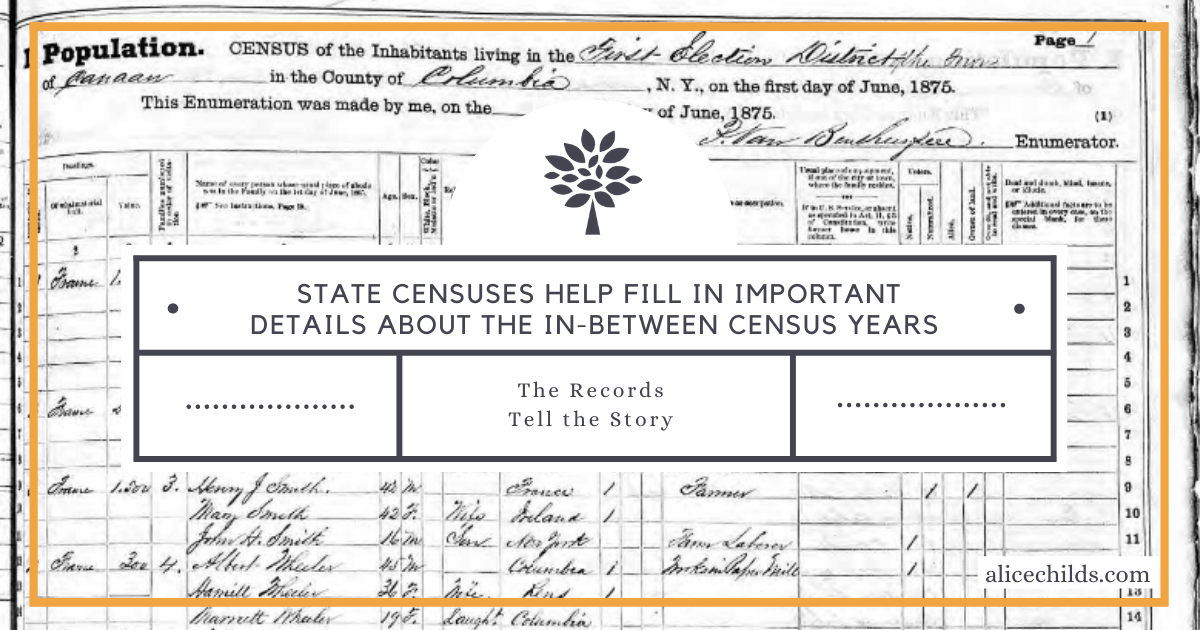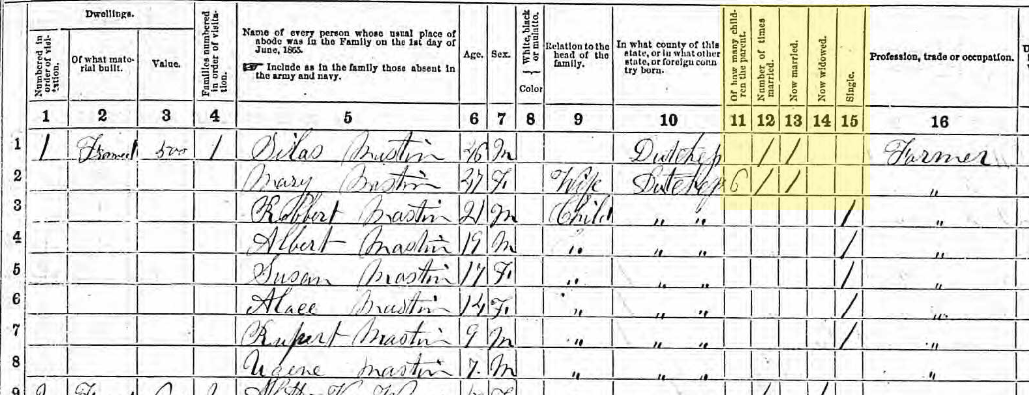
Have you been using state censuses in your genealogy research? Typically taken in the years between federal census enumerations, state censuses are great resources because they can help add details to those in-between years. I frequently use New York State censuses in my research. They are particularly helpful because they were taken every ten years from 1855-1875, in 1892, and again from 1905-1925. Not only do these censuses provide details for the in-between years, but the 1892 census can act as a substitute for the missing 1890 census. Consider the following examples:
The 1850 federal census lists each person’s state or country of birth. The 1855 New York state census goes one step further by listing the county of birth if the person was born in New York state. The addition of birth county for those born in New York can really help focus the search for records and provide additional clues about our ancestors’ families. For example, the county of birth on the 1855 New York state census below provided key clues that connected my research subject, Aaron Brownell, to his potential father Martin Brownell. Aaron’s obituary stated that he was born in Livingston County, New York. In 1855, Martin Brownell was living next to a Horace Brownell (his potential son). Horace’s birthplace was also listed as Livingston County, providing indirect evidence that Martin could have been living in Livingston County at the time sons Horace and Aaron were born.
The 1855 New York state census also provides information that will help trace migration patterns. Martin and Horace migrated together to several different locations, and the 1855 state census shows that Martin had been at his current residence for one year (second-to-last column below). Horace had apparently moved in just a few short months after Martin, and had been living next door for 5 months.
Notice also that relationships to the head of household are provided on the 1855 New York state census – information that doesn’t appear on federal censuses until 1880.

The 1865 New York state census leaves out the information about the number of years a person had been a resident of their current location, but it adds great information about marital status and children, asking how many children a person had and the number of times he or she had been married:

As mentioned above, the 1892 New York state census can act as a substitute for the missing 1890 federal census. The information provided is less plentiful than earlier state censuses, but it does list name, age, country of birth, whether a person is a citizen or alien, and occupation. In addition to tracing your ancestor’s residence, you will be able to determine whether naturalization records might exist for an immigrant ancestor.

The 1875, 1905, 1915, and 1925 New York state censuses provide similar information, listing all members of a household, their relationship to the head of family, county or state/country of birth, and marital and citizenship status in various ways. The 1915 census is particularly helpful, stating the number of years a person has resided in the United States:

You can see that state censuses are a valuable tool for New York researchers. But what about other states? To find out whether your state of interest has state census records, visit the United States Census State Censuses page on the FamilySearch Research Wiki. You can click each state to access a table showing whether state censuses were taken and for which years. Other types of censuses that might have been taken for your state and will be shown on this page include colonial censuses, territorial censuses, Indian census rolls, school censuses, and more. Be sure to examine each type of census available for your locality to reap maximum benefit from census records.
This post is the third in a series about census records. You can find my first two posts here:
Maximizing the Benefit of Census Records in your Research
U.S. Census Non-Population Schedules: Adding Details to Our Ancestors’ Lives
